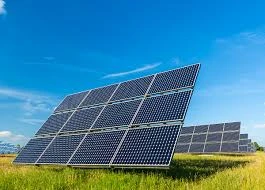Comprehending Specifications for Solar Panels and Their Impact on Performance
Understanding Solar Panel Specs A Comprehensive Guide
As the world increasingly shifts towards renewable energy sources, solar power has emerged as a leading solution. Solar panels have become more accessible, making it crucial for consumers to understand their specifications. This article will delve into the essential specs of solar panels, enabling you to make informed decisions when considering solar energy for your home or business.
1. Efficiency
The efficiency of a solar panel measures how well it converts sunlight into electricity. It is expressed as a percentage, and higher efficiency ratings indicate that a panel can generate more electricity from the same amount of sunlight. Most residential solar panels have an efficiency rating between 15% and 22%. When comparing panels, consider that while higher efficiency panels may cost more upfront, they often require less space, making them particularly advantageous for homes with limited roof space.
2. Wattage
The wattage rating of a solar panel indicates its power output under standard test conditions (STC), typically expressed in watts (W). Most residential solar panels range from 250W to 400W. A higher wattage means the panel can produce more electricity. For example, if you have a 300W panel and it receives optimal sunlight, it can generate about 300 watt-hours of electricity in one hour. Assessing your energy needs can help determine the total wattage of panels required to meet your household or business consumption.
3. Panel Type
Solar panels are generally classified into three categories monocrystalline, polycrystalline, and thin-film.
- Monocrystalline panels Known for their high efficiency and sleek appearance, these panels are made from a single crystal structure, usually silicon. They typically have the highest efficiency and longest lifespan, making them a preferred choice for many homeowners. - Polycrystalline panels These panels are made from multiple silicon crystals and are usually less expensive than monocrystalline panels. While they have a slightly lower efficiency, they still provide a good balance between cost and performance. - Thin-film panels These are lightweight and flexible, making them suitable for a variety of applications. However, they generally have lower efficiency and require more space to produce the same amount of electricity as crystalline panels.
understanding solar panel specs

4. Temperature Coefficient
The temperature coefficient of a solar panel indicates how much its performance decreases as temperatures rise. This is crucial in hotter climates, where elevated temperatures can significantly reduce energy output. A lower temperature coefficient, expressed in percentage per degree Celsius (e.g., -0.4%/°C), is preferable, as it means the panel will perform better in high heat.
5. Warranty and Lifespan
The warranty period of a solar panel is a hallmark of its durability and reliability. Most manufacturers offer a performance warranty of 25 years, which guarantees a certain level of energy output throughout the panel's lifespan. Additionally, many panels come with a product warranty that covers defects. It's essential to consider both warranties when assessing panels, as a longer warranty often correlates with a more trusted and higher-quality product.
6. Cost
Pricing is always a concern for consumers. While solar panel prices have significantly decreased over the last decade, it’s essential to consider the total installation costs, including inverters, mounting systems, and labor. When evaluating cost, it's helpful to calculate the cost per watt, which provides insight into the value of the panel relative to its output.
Conclusion
Understanding solar panel specifications is vital for anyone considering solar energy solutions. By familiarizing yourself with efficiency, wattage, panel type, temperature coefficients, warranties, and costs, you can make informed choices that best meet your energy needs and budget. Investing in solar energy not only helps reduce your carbon footprint but can also lead to significant long-term savings on your energy bills. As you explore your options, remember that knowledge is power—empowering you to make greener choices for a sustainable future.
-
String Solar Inverter: The High-Efficiency Solution for Smart Solar EnergyNewsJul.14,2025
-
Revolutionizing Rooftop Energy with the Power of the Micro Solar InverterNewsJul.14,2025
-
Power Independence with Smart Off Grid Solar Inverter SolutionsNewsJul.14,2025
-
On Grid Solar Inverter: Powering the Future with Smart Grid IntegrationNewsJul.14,2025
-
Monocrystalline Solar Panels: High-Efficiency Power for the Future of Clean EnergyNewsJul.14,2025
-
Bifacial Solar Panel: A Smarter Investment for Next-Generation Energy SystemsNewsJul.14,2025







